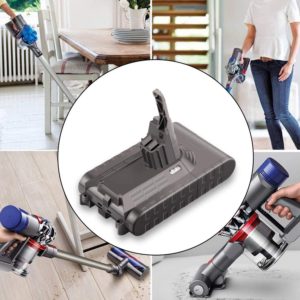If you want to buy a vacuum, you know there are a lot of options, it may be a little overwhelming! First choose the vacuum that best suits your lifestyle, then continue to choose the function you want. finally, look at the comments to learn the best products for your money.
- Choose a vacuum with bags for less dust. With uprights and canister vacuums, you have the option of bagless or with bags. A bag attaches to the vacuum to capture the dust you’re sucking up from the floor. With bags, you create less dust because you’re pulling the whole bag of the vacuum with the dust in it.
- On the other hand, sometimes the replacement bags are hard to find or expensive.
- Pick a bagless option for easy cleanup. With a bagless option, you simply pull out the container and dump the dirt in the trash. Plus, a bagless container makes it easier to find something you lost and vacuumed up, such as an earring.
- However, you must keep the filters clean with this type of vacuum, and it can release a lot of dust when you’re dumping the container.
- Make sure your vacuum isn’t too heavy to lift. If you’re buying it in a store, try lifting the model to make sure it’s not a strain. Some models are very heavy. Online, check out the weight of the vacuum to make sure you can comfortably lift it.
- Try a stick vacuum or a robot vacuum if you have a bad back.
- Look for a longer cord if you have big rooms. If your house has larger rooms, vacuums with short cords could be annoying, as you’ll need to plug the vacuum in again and again just to finish the room. While some options are cordless, most traditional and canister vacuums have cords. Check the cord length and measure the length of your rooms to make sure you can cover the whole room fairly easily.
- Most upright and canister vacuums have cords, while only some handheld and stick models do. Robot vacuums are also cordless.
- Check the battery life on cordless vacuums. If you pick an option like a cordless handheld vacuum or even a robot vacuum, you want it to hold a charge long enough to finish the job. If you’re just getting it for spot cleanups, the charge doesn’t need to be terribly long. However, if you’re getting it to cover a room, you’ll need it to run at least 10-15 minutes on 1 charge.
- It’s also useful to have an easy-to-read iRobot Roomba 537 Vacuum Cleaner Battery display, so you know how long you have left before the battery runs out.
- Look for eco-friendly options if that’s important to you. Every category of vacuum will have more eco-friendly options. Some save energy, while others may use less plastic or need replacing less often.
- Durability is a key factor to being eco-friendly. That is, having a vacuum that lasts longer means creating less waste. Repair your old vacuum, or choose a model that has high ratings for durability.
- Look specifically at how much power each vacuum uses. Lower consumption of power is better for the environment.
- Choose uncoated bags or filters for a more environmentally friendly option. Uncoated bags can be recycled, or use a bagless vacuum so you don’t need bags at all.
- Ensure you have the attachments you want. Attachments can include anything from bare floor mops to corner wands. Some vacuums also come with special wands for pet hair pickup. Think about what you need to clean before deciding what you require in a vacuum.
- If you have pets, look for a vacuum that’s marketed specifically for pet owners, as it will likely have the attachments you need.
- Some also come with fan-cleaning wands, stair cleaners, wall cleaners, and crevices cleaners.
3 Getting Your Money’s Worth
- Decide how much you want to spend. The price of vacuums can range anywhere from $20 USD to a few thousand dollars, depending on the brand. Just because a vacuum is expensive doesn’t mean it will do well. Conversely, a cheaper vacuum can do as well as a more expensive model, but it all depends on the individual model. However, you may want to spend a little bit more to get a quality machine that will last; a cheaper vacuum may do just as good a job, but it may not hold out as long as a mid-range vacuum.
- Handheld and stick vacuums tend to be a little less expensive and robot, canister, and upright vacuums tend to be a bit more expensive. You should be able to find a fairly decent vacuum for a reasonable price at a local hardware store or big box store. Many of the popular vacuum models fall in the $30-$50 USD range.
- Shop for a vacuum in April or May to save money. This time of year, vacuums are often put on sale. That’s because “spring cleaning season” is ending, and stores will be trying to unload any extra stock.
- Check out professional performance reviews. There are a lot of models and brands on the market, so it can be difficult to decide between them. Professional reviews, such as product review guides, can help you wade through the sea of vacuums.
- For instance, you can try CNET or Consumer Reports.
- Look at user ratings. Another great option is to simply check out what average users think of the vacuum. You can find user ratings on big retail sites, where users will leave ratings and reviews.
- While you should always take these with a grain of salt, they can give you an idea of which vacuums are decent and which ones are not as good at their job.

